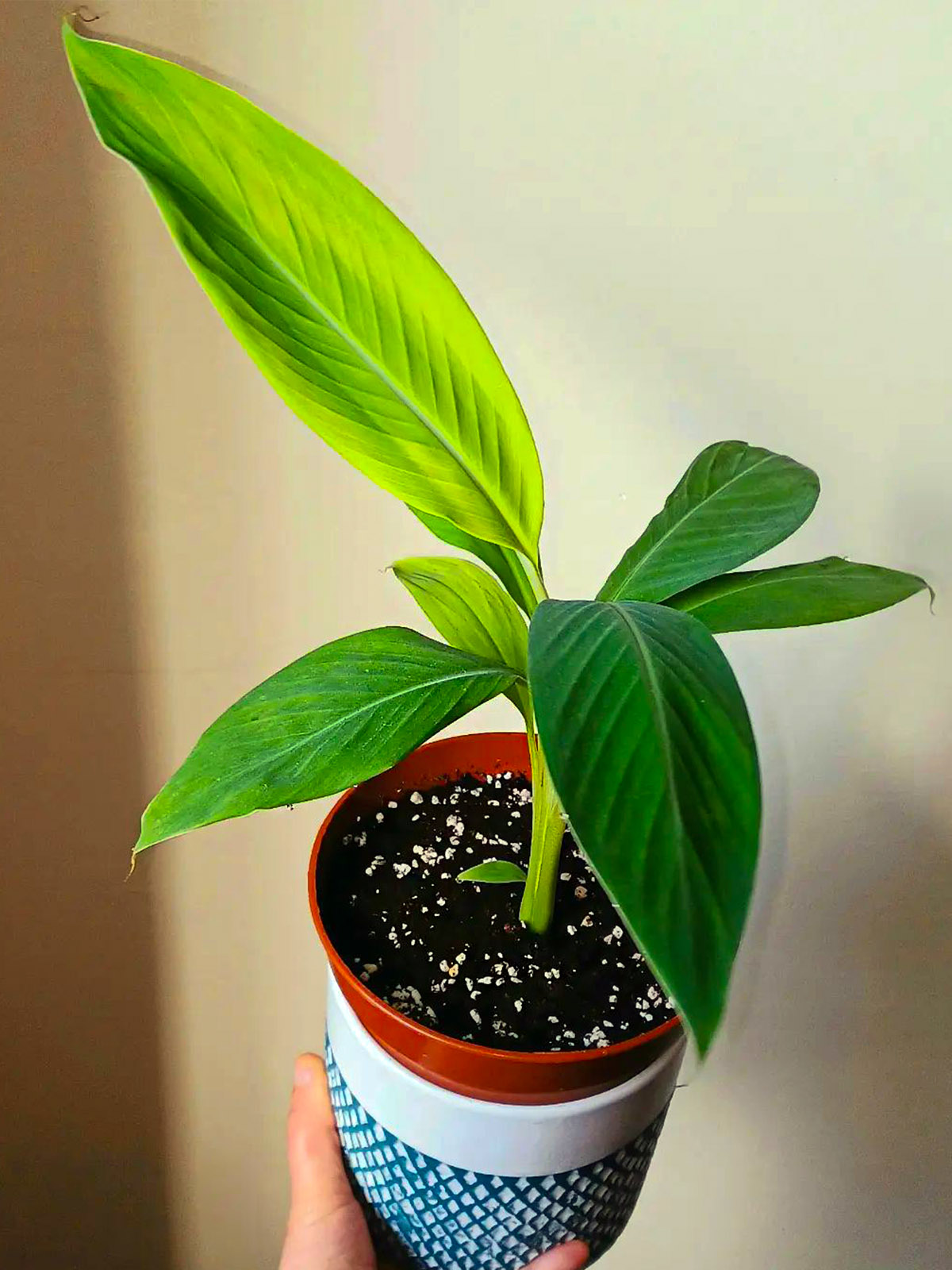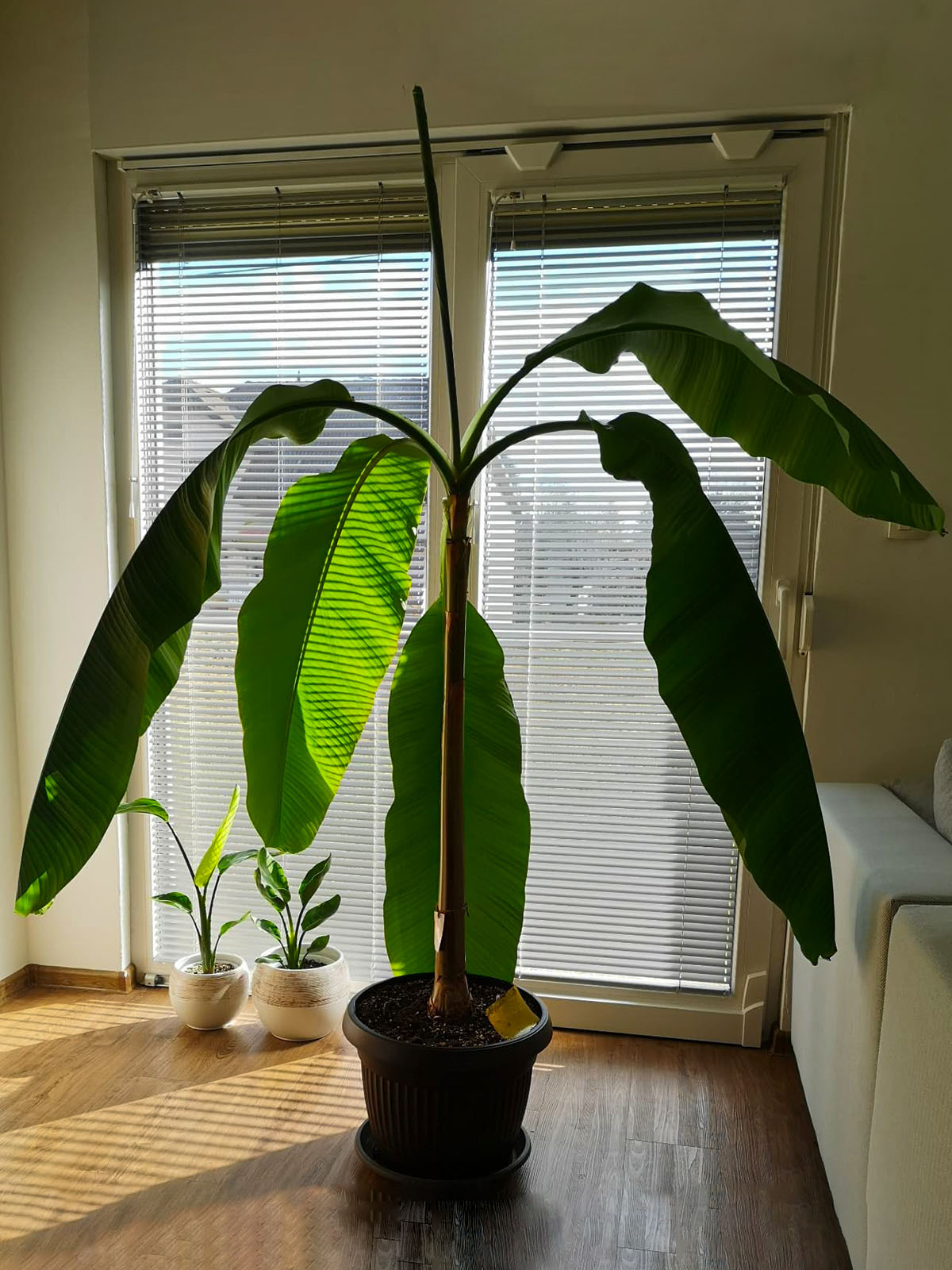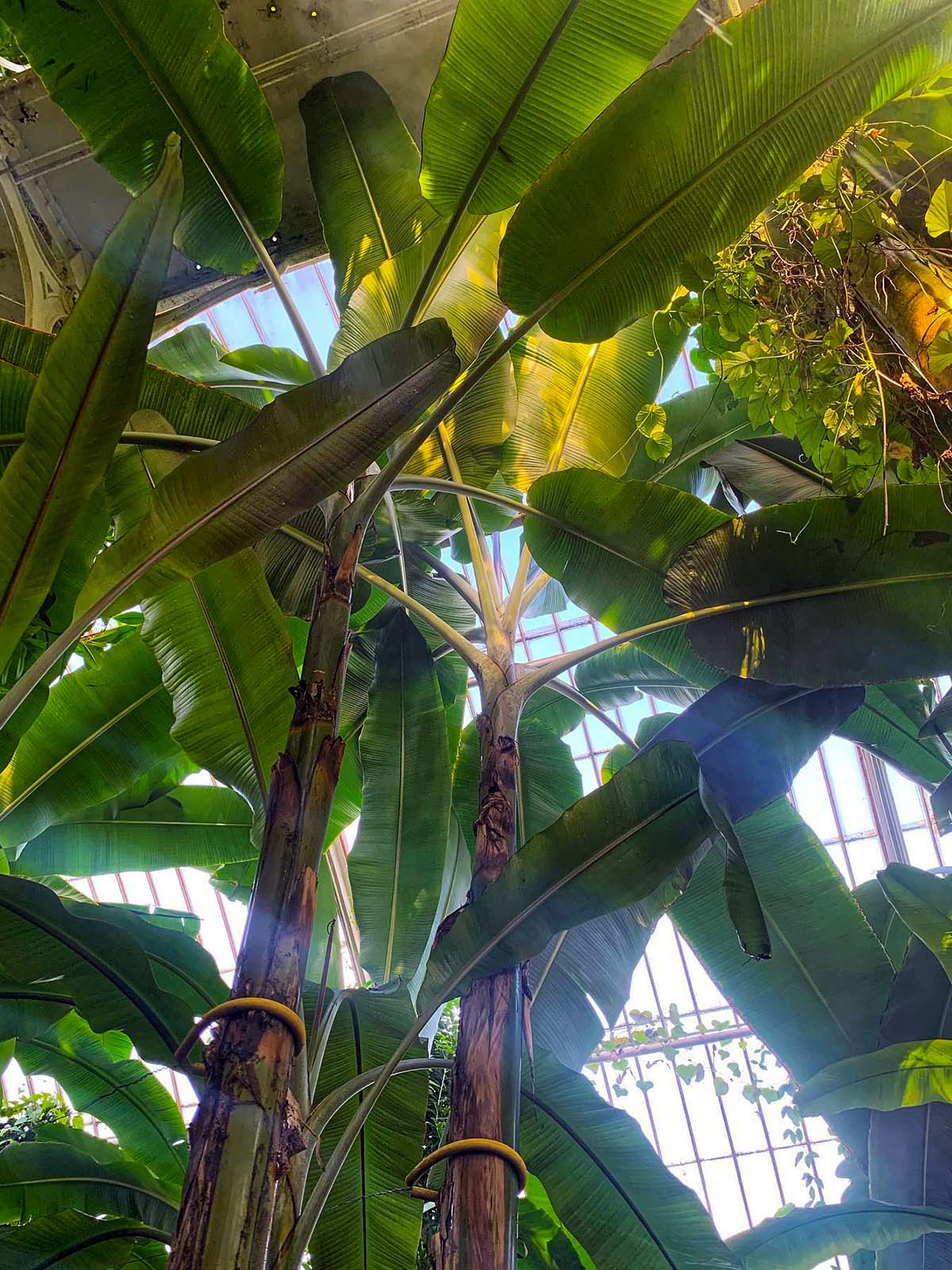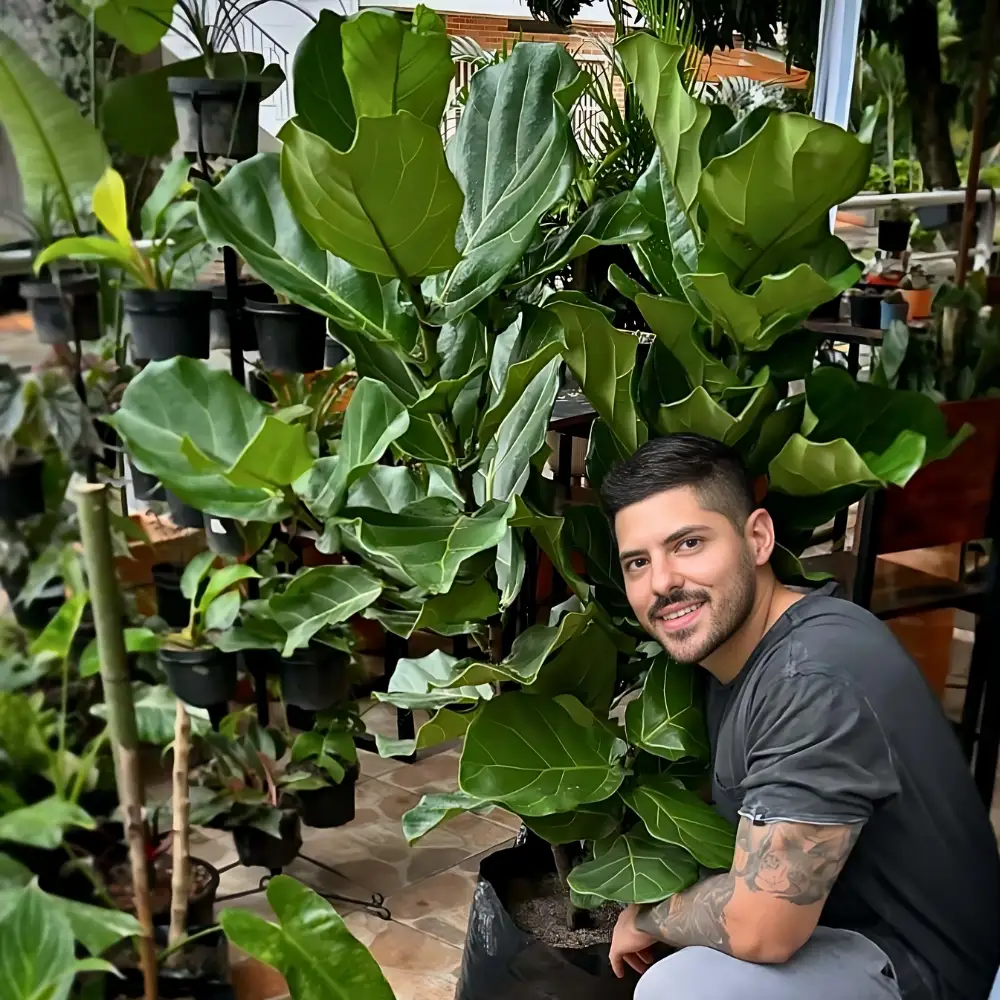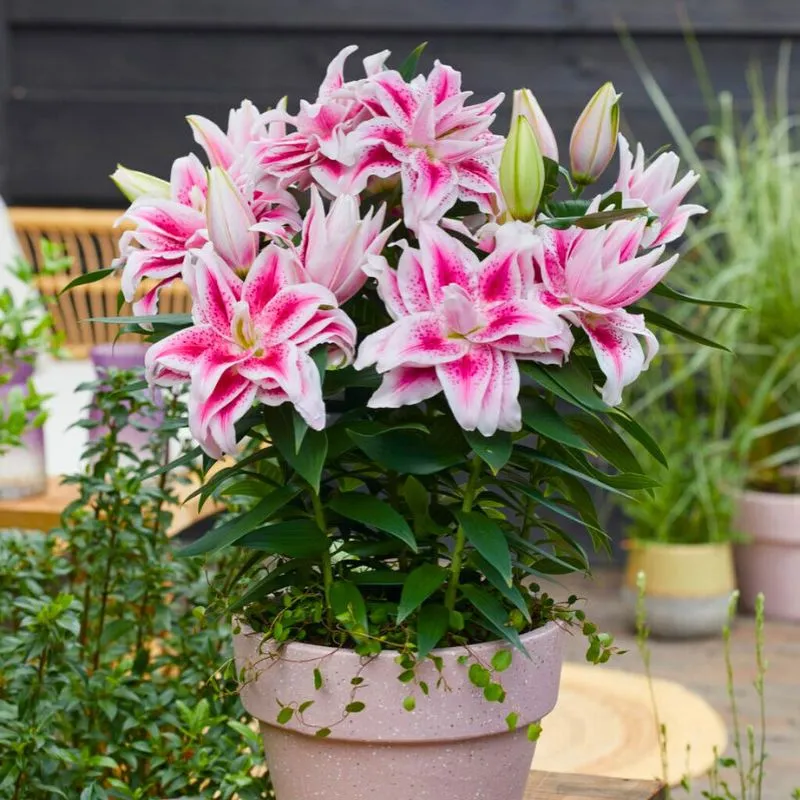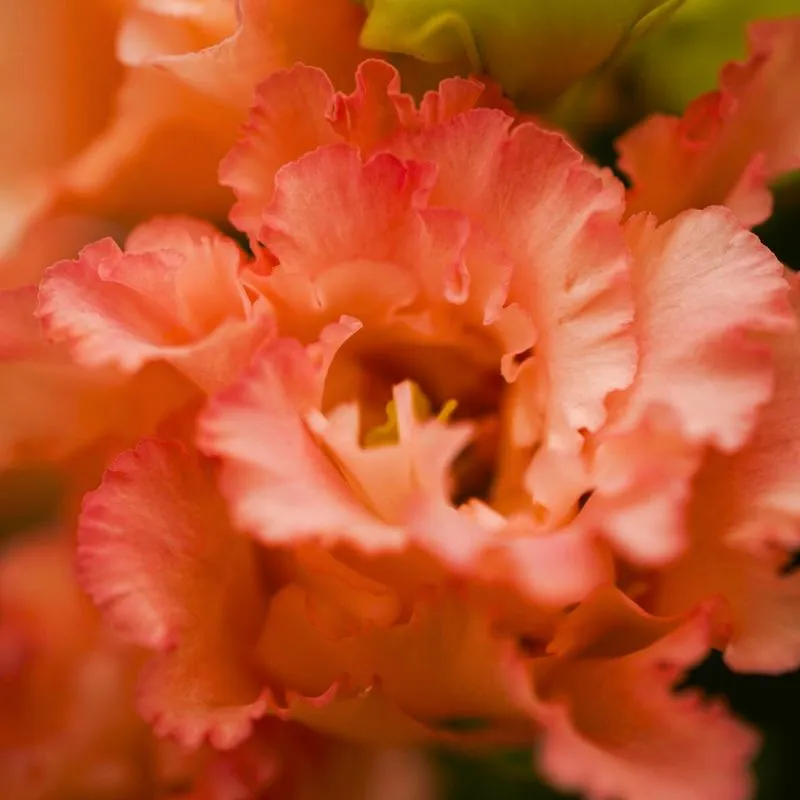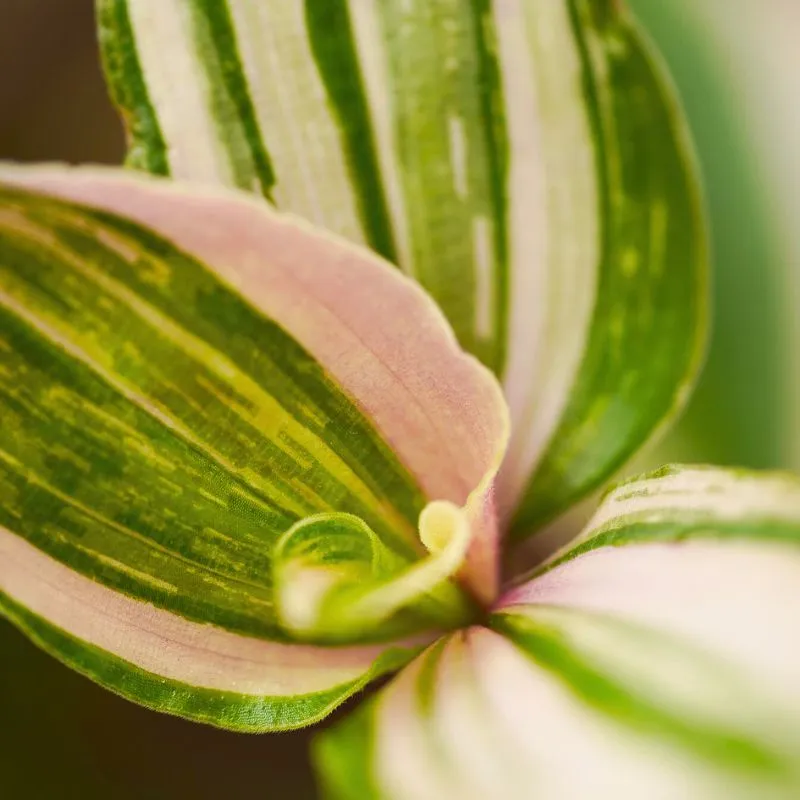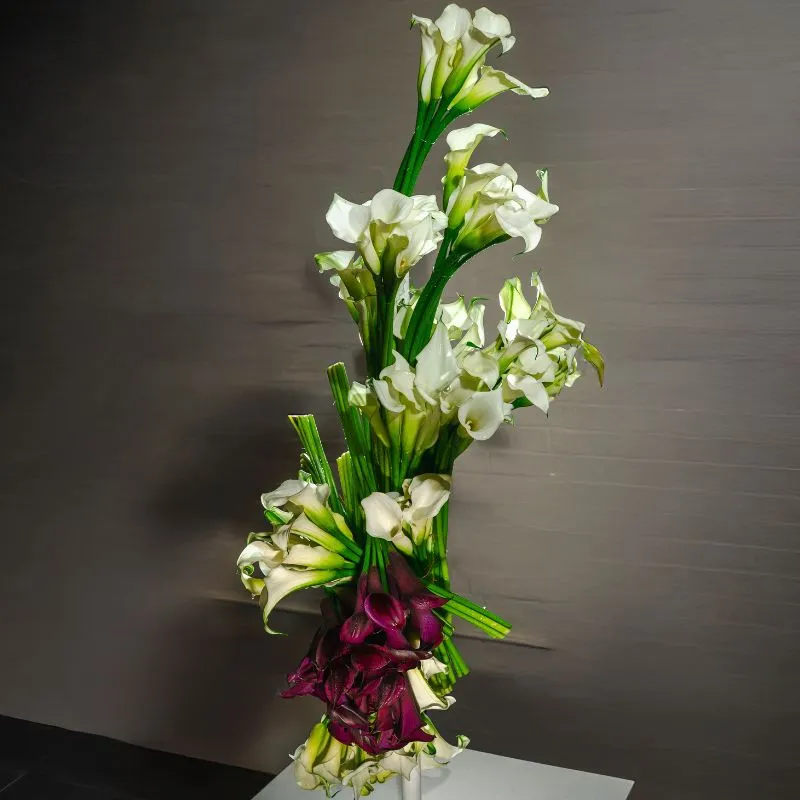Wanna buy an all-new banana plant? Then try the astounding Musa Basjoo. With the banana plant, you get an extremely strong, tough plant with large green leaves. Did you know that Musa Basjoo plants can be placed both indoors and outdoors? Wherever you place the banana plant, this tropical gem will steal the show! And did you also know that bananas can really grow on them?
What Is the Musa Basjoo Plant?
This Musa Basjoo is originally from Japan and has relatives in the Musaceae family. Therefore, it is often referred to as 'Japanese Banana'. This is considered to be the most suitable and common banana for planting outdoors. The beautiful leaves give your garden a real 'jungle look'.
The capability of planting outdoors means the Musa Basjoo banana tree can be put in gardens pretty much in most parts of the world when the conditions over the year vary from -5 to +25 degrees Celsius. When this is done properly, the above-ground parts die off during the frost period, but the rhizomes will sprout again in the spring.
The better you protect the trunk and roots from the cold, the better your plant will recover during the spring. Protect the roots with a thick layer of straw or mulch around the base of the plant. Cut off the old leaves from the plant. You can protect the trunk by tying hay and reed mats around it.
This hardy banana Musa Basjoo grows quickly and produces huge pseudo-trunks about 2m in length, with a crown of very large, exotic, leathery leaves 2m in length and 70cm in width. If you're wondering how tall Musa Basjoo grows, you must know that, after a few years, this plant can reach a height of four meters. Incredible if you imagine that you bought a 50cm plant in a 17cm diameter pot.
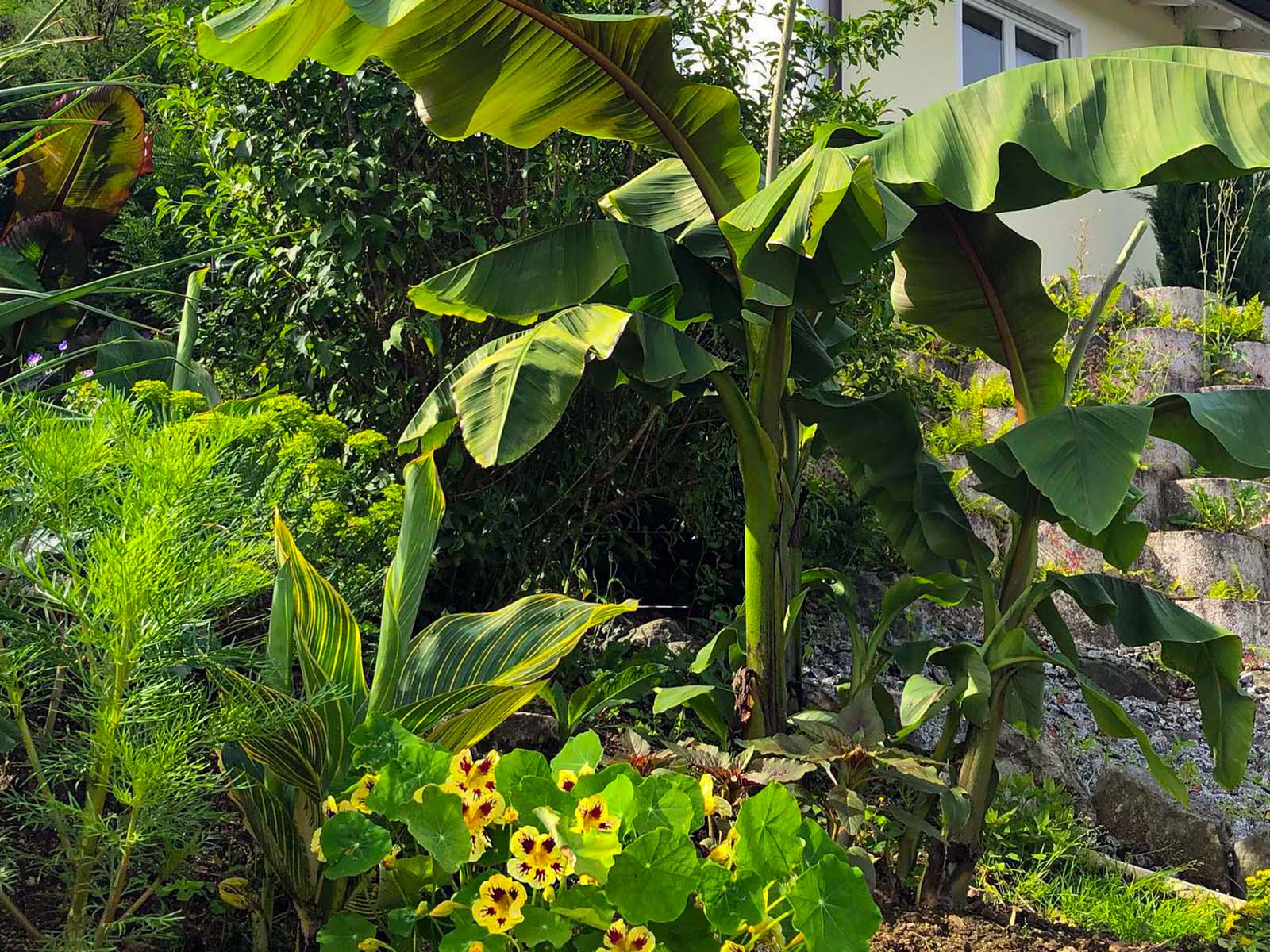
Are Musa Basjoo Bananas Edible?
Musa Basjoo can develop banana flowers in perfect conditions, like when the plant has been kept frost-free. The purple flower develops into inedible bananas. These are small and green. Unfortunately, this rarely happens in the Netherlands, the home base of grower Persoon Potplanten. But do give it a try when you are located in a warmer part of the globe!
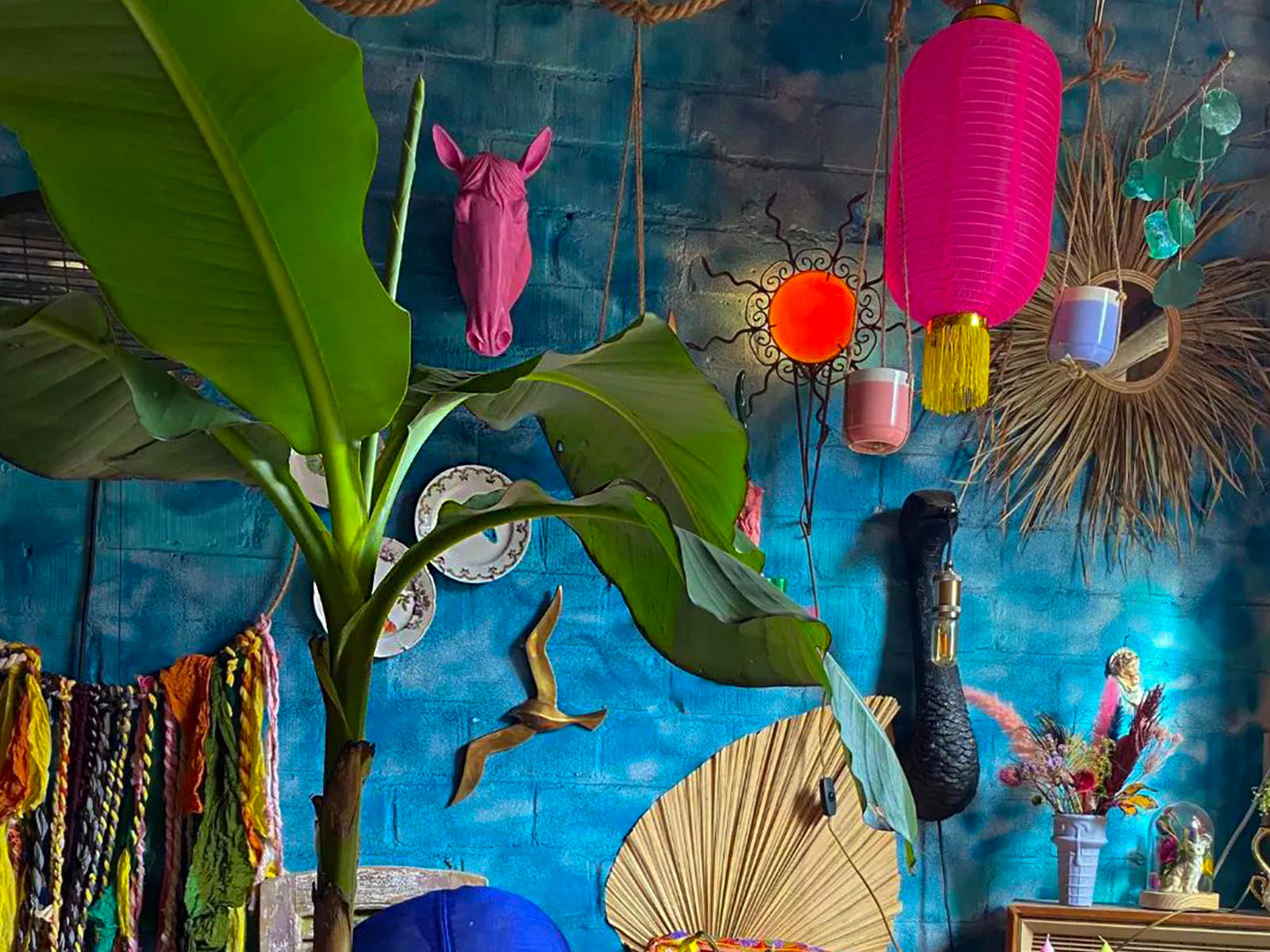
Can Musa Basjoo Grow in Pots?
Alternatively, the plant does well as potted plants indoors and on patios as well. The plant will not reach four meters unless you re-pot it constantly to bigger and bigger pots. So, if you're thinking about growing your Musa Basjoo in a pot, know that you can absolutely do it!
Musa Basjoo Care
It is obvious that Musa Basjoo, like all banana plants, thrives with lots of light to half shade. It's a hungry and thirsty plant, so there's a bit of work to be done on your homemade jungle. Treat the plant with an organic or liquid fertilizer every two weeks and water it generously. The soil must be kept moist at all times, and fertilized until July. These plants are hardy and relatively easy to care for, but they still require proper attention and care to thrive. In this article, we will discuss some tips on how to care for Musa Basjoo, both indoors and outdoor.
Indoor Musa Basjoo Care Tips:
- Lighting: Musa Basjoo indoors require bright, indirect light to grow. Place them near a window that receives plenty of light but is protected from direct sunlight, which can scorch the leaves.
- Musa Basjoo Temperature and Humidity: Musa Basjoo plants prefer temperatures between 15-25° Celsius (60-80°F) and high humidity. Keep the temperature consistent and place a humidifier or a tray of water near the plant to increase humidity.
- Musa Basjoo Watering: Water your Japanese Banana plant regularly, keeping the soil moist but not waterlogged. Check the soil frequently and water when the top inch of the soil feels dry.
- Fertilizing: Feed your plant with a balanced, water-soluble Musa Basjoo fertilizer every two weeks during the growing season (spring and summer) and once a month during the dormant season (fall and winter).
Outdoor Musa Basjoo Care Tips:
- Sunlight and Shade: Musa Basjoo plants thrive in full sunlight but can also tolerate partial shade. Choose a spot in your garden that receives at least six hours of sunlight a day.
- Musa Basjoo Soil: These plants prefer well-draining, nutrient-rich soil. Amend the Musa Basjoo soil with compost before planting, and add a layer of mulch to retain moisture and suppress weed growth.
- Musa Basjoo Watering: Water your Musa Basjoo banana tree deeply once a week, ensuring that the soil is moist but not waterlogged. During hot, dry weather, increase watering to twice a week.
- Fertilizing: Feed your Musa Basjoo plant with a slow-release, balanced fertilizer once a month during the growing season (spring and summer).
- Protection: Musa Basjoo plants are hardy, but they may require protection from frost during the winter months. How to protect Musa Basjoo in winter? Cover the plant with frost cloth or a blanket if temperatures drop below -5° Celsius (20°F).
Get Your Musa Basjoo at Decorum
The Musa Basjoo is one to have and to hold. Available at Decorum. Grower Persoon Potplanten grows this plant that was initially bred by Evanthia. Each plant is manually selected and packaged by the brothers Aad and John Persoon and their staff of green plant specialists.
Check this 20-second YouTube film for an impression of the musas at Persoon Potplanten:


